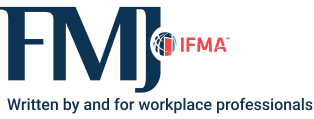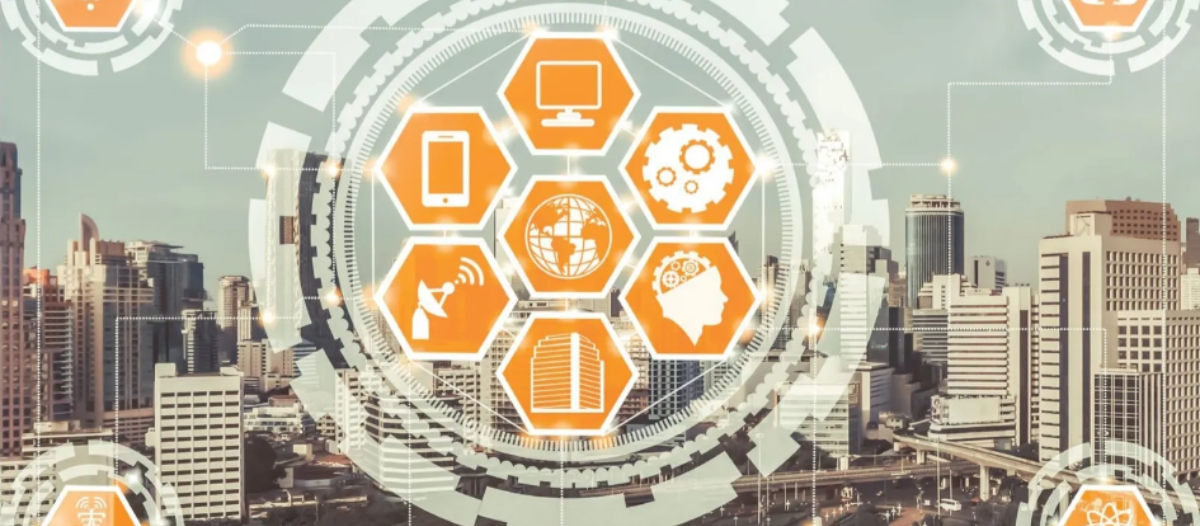Employee Retention
Why ongoing education is the key

In an era of economic turbulence, employee turnover has become a top concern for business leaders across every industry. But this pain is disproportionately felt in the facility management space: employee turnover here can reach more than 200 percent, which is significantly higher than the national average.
Given the industry’s heavy reliance on safety regulations, this turnover creates a skills gap across leadership, engineering and maintenance tech roles that have the potential to be incredibly dangerous for employees’ overall health and safety.
Organizations must take a multifaceted approach to closing this gap. With recent data from LinkedIn revealing that providing learning opportunities is the No. 1 way organizations are using to improve retention, FM employers must offer their workers the resources they need for long-term growth. As such, employee education and training are the most effective way to keep facilities both safely operating and fully staffed.
Design robust onboarding processes with clear expectations
One-size-fits-all onboarding approaches are outdated. Quick tours of the facility and rushed training processes are not enough to set new employees up for success in their new roles, especially when there is no support or follow-ups to gauge how that worker is progressing.
According to the Society for Human Resource Management (SHRM), onboarding can last up to a full year and should involve multiple stakeholders in the organization, including employees’ managers and peers. This may seem like a drawn-out process, but it takes time for new workers to meaningfully retain information. Giving employees ample time to ramp up is not just critical for operational safety; it also provides them with the opportunity to upskill within the facility and beyond.
Revamping and revitalizing the onboarding process should begin with developing a strategic plan that outlines what the company needs a new hire to achieve. This plan should include clear objectives and goals on a set timeline to lay the groundwork for employee growth and the employee career trajectory. Does this individual need to renew certifications to operate role-specific machinery? What resources, structure and support do they need to get certified on a reasonable timeline? These considerations should be baked into the onboarding plan so employees have everything they need to safely hit the ground running.
Proper onboarding should also incorporate learning and development systems to ensure the experience is engaging, interactive and resonant. Such platforms will grant employees access to ongoing training so they can continue their learning trajectory while taking care of their daily on-site responsibilities.
Consider kick-starter learning paths as an example. Assigning courses for the diverse array of FM jobs can be difficult to navigate. The right learning management platform will be able to match online training courses to jobs like facility technician, facility manager, electrician, plumber and others to ensure each employee has access to foundational, role-specific knowledge. Kick-starter learning paths are a simple way to assess and assign courses that align with federal OSHA and EPA compliance requirements while facilitating employees’ training objectives.
Onboarding and learning paths should also consider employee goals and career skills. Employees need to have job-related skills today, but it is also important that the employee feels invested in building skills that lead to a future career path with more opportunities. To improve employee retention and engagement, career paths can help individuals understand that today’s level 1 facilities maintenance technician can lead to level 2, progressing to HVAC technician career opportunities.
What role should managers play?
Managers have a critical role to play in getting the onboarding process right from the get-go. Direct managers should constantly look for more training opportunities for their employees and vouching for their growth. Managers should understand the applicable learning paths and career skills required for their employees. Consider the following review cycle guide as an example of how managers can stay involved in new employees’ success from the moment the employee is hired:
-
PLAN → Set goals and development objectives
-
ACT → Develop and build role-specific capabilities.
-
MONITOR → Complete ongoing check-ins, coaching and improvement.
-
REVIEW → Deliver performance review as it pertains to the original plan.
By setting reasonable goals for employee learning and professional development, providing feedback and supporting ongoing training, managers can demonstrate they have a personal stake in their employees’ growth.
Managers thus have an integral role to play in retention. As leaders within the organization, managers are responsible for creating and perpetuating a positive workplace culture. They can accomplish this by fostering solid relationships with their employees, asking thoughtful questions and taking concerns seriously. All of this serves to strengthen trust between manager and employee, and it contributes to overall employee well-being – an absolute necessity for high-performing teams, especially in potentially hazardous environments.
With so much responsibility on their shoulders, managers should not be excluded from organizations’ training initiatives. Ensuring employees have the necessary technical training to efficiently and safely fulfill their duties is only part of the picture – facilities should prioritize ramping up soft skills as well. Anybody can be an effective manager with the proper training and self-reflection, but many leaders are promoted without adequate instruction. According to Gallup, the five traits of great managers include:
- Motivation: Inspiring teams to get exceptional work done.
- Workstyle: Setting goals and arranging resources for the team to excel.
- Initiation: Influencing others to act, pushing through adversity and resistance.
- Collaboration: Building committed teams with deep bonds.
- Thought process: Taking an analytical approach to strategy and decision making.
Organizations that wish to attract and retain staff must begin by providing managers with the training they need to hone the skills and traits required of effective leaders.
Provide clear growth pathways in conjunction with ongoing training
 While training current managers, keep future leaders within the organization in mind as well. Many potential managers may be already working in nonmanagement roles, so providing soft skills and professional development training can offer the business a strong leadership pipeline to power ongoing success.
While training current managers, keep future leaders within the organization in mind as well. Many potential managers may be already working in nonmanagement roles, so providing soft skills and professional development training can offer the business a strong leadership pipeline to power ongoing success.
Creating a culture of learning and excellence in which workers are satisfied, engaged and productive enough to be continuously developing and improving should be leaderships’ top priority. However, career growth is no longer a prescriptive or linear process. The imagery of climbing up the corporate ladder must be reimagined for the contemporary workforce. Instead, think of career advancement as a rock wall: the climber does not just go upward – they must traverse left, right and sometimes down a few holds to progress.
Even for those who are not interested in pursuing management roles, providing clear growth pathways wherein employees can upskill and reskill themselves promotes self-awareness, clarity and confidence in their abilities. Consider the following methods for socializing growth pathways outside of traditional training initiatives:
- Establishing role profiles for staff that explicitly state what is required of an individual in their role, what they need to be successful and what makes them unique.
- Hosting live learning events for various teams to support social learning.
- Cross-functionally matching mentors and mentees so they can help each other grow.
Outside of mandatory training, leaders should also consider removing the term “required” from additional courses. This language can make it feel like employees are simply checking a box rather than investing in their professional advancement. Instead, communicate that the resources are there and encourage employees to use them, but do not force it. Allowing them to drive their own career growth will nurture a sense of individual ownership and pride in their accomplishments.
The anatomy of effective technical training
Just like onboarding, there is no blanket approach to training that will adequately meet the needs of every organization or individual employee. That said, there are several components to effective training that FM leaders should ensure their learning and development programs include, no matter the specifics.
One such component is the implementation of a comprehensive learning and training management platform. This technology is essential for closing skills gaps, promoting organizational consistency, and boosting morale and retention.
Online learning standardizes the presentation of the necessary role-specific skills and knowledge new hires must hone to fulfill their duties. For example, these programs instill confidence that an organization’s maintenance technicians, regardless of their level, have been introduced to the same foundational safety concepts they need to operate, thereby creating a solid basis for the organization to build upon.
Learning management systems also streamline the onboarding process, which is crucial for employee retention in a competitive job market. Systems that offer career pathing guides, for instance, can establish 12-month training goals for new hires, no matter their experience or specific role.
All of this contributes to improving employee morale, retention and professional growth. When employees have access to a library of training resources, in addition to their onboarding and compliance requirements courses, they may seek out their own training opportunities to further individual development. With 94 percent of respondents telling LinkedIn that development opportunities would encourage them to stay at their company longer, it is obvious that providing a clear path for continuous upskilling and education has a competitive retentive advantage.
Implementing virtual learning is not enough to adequately train employees, no matter how robust the platform. This is where the 70/20/10 learning model comes into play. This approach posits that workers obtain most of the knowledge and skills necessary for their jobs by getting their hands dirty and performing work-related tasks. The rest comes from social interactions with colleagues and formal learning initiatives like classroom lectures or eLearning modules.
As such, it is important to marry virtual learning with on-the-job training (OJT). The most used training method, OJT takes place directly at the worksite and involves the trainee performing or observing someone else perform certain tasks. OJT provides learners with the opportunity to use real machinery, equipment, tools, processes and procedures so they can develop the competencies required to fulfill their responsibilities.
The right learning management software is designed to support a blend of OJT and virtual learning. By supplementing hands-on education with digital assets like 3D animations, organizations can ensure they are covering all their bases when it comes to best-in-class training.
It’s all about culture
Building a culture of continuous improvement will prove a massive contributor to employee retention. By giving employees the necessary resources to grow, develop and feel confident in their roles, organizations can ensure they are doing everything in their power to keep their staff safe and engaged.
But education must be supplemented by a sincere sense of belonging. When training and advancement opportunities are married with relationship-building efforts (even something as simple as regular coffee breaks with managers can go a long way), employees at every level will feel holistically supported and be less likely to churn.

References
builtin.com/recruiting/employee-turnover-statistics
diversifiedm.com/how-outsourced-facilities-maintenance-turnover-can-impact-your-business
inc.com/scott-mautz/these-are-5-traits-of-great-leaders-according-to-50-years-of-gallup-research.html
learning.linkedin.com/resources/career-development/develop-employees
Read more on Leadership & Strategy , Training and Career Advancement
Explore All FMJ Topics









